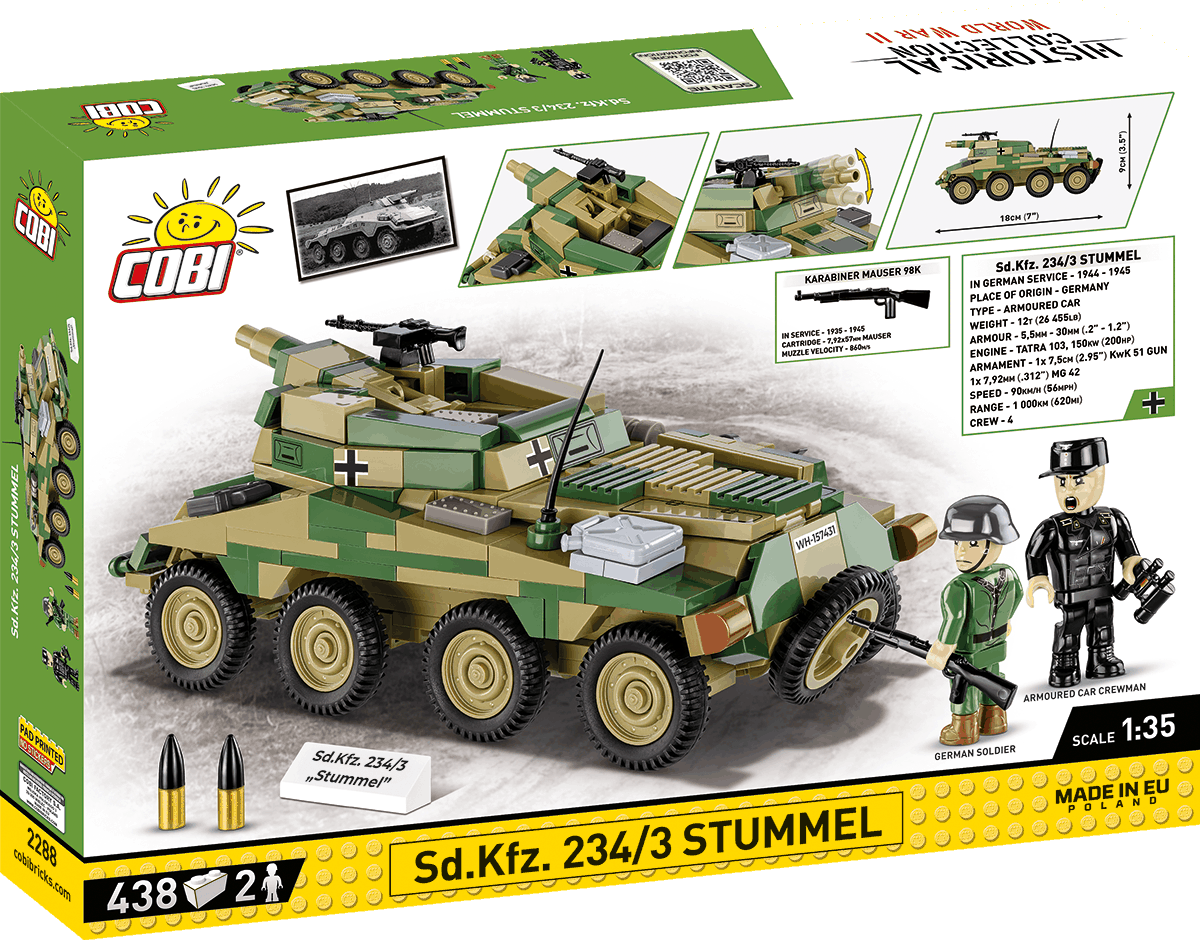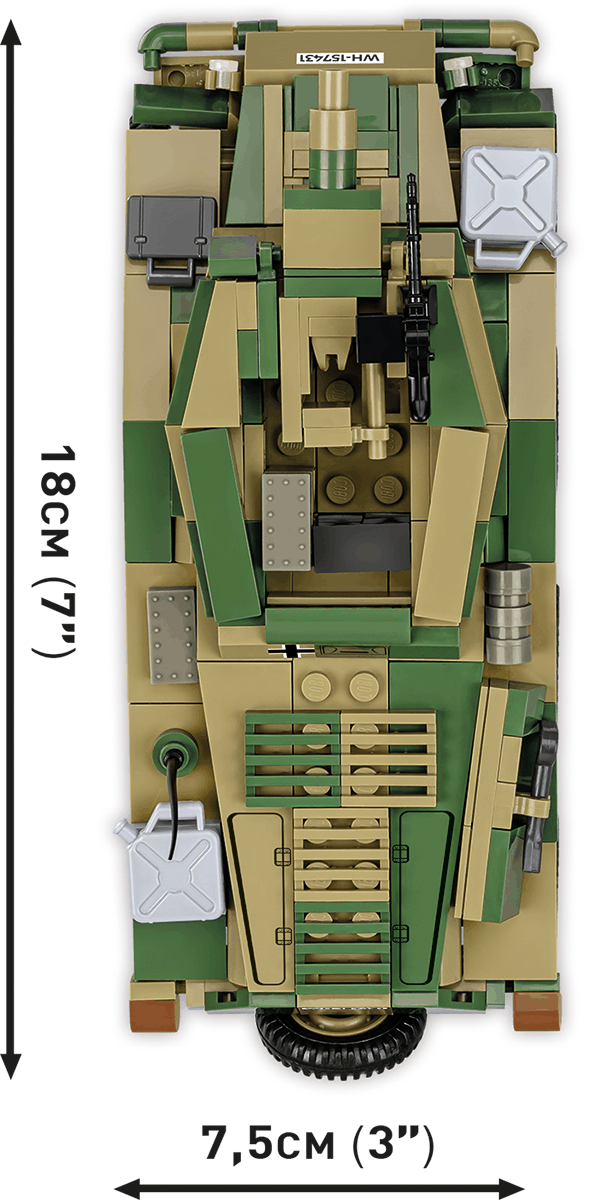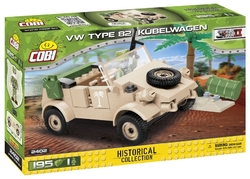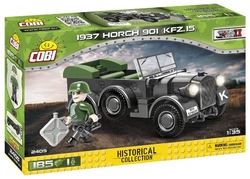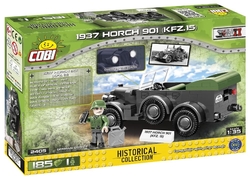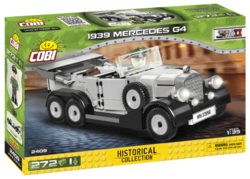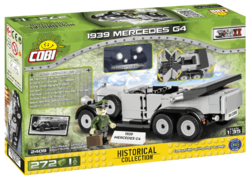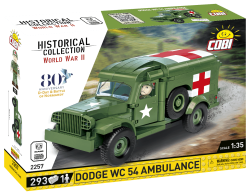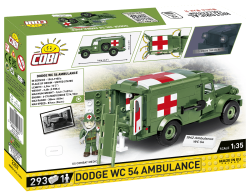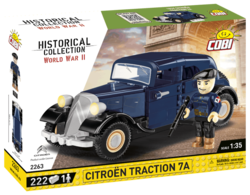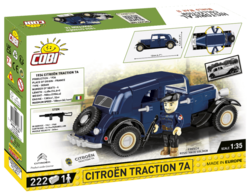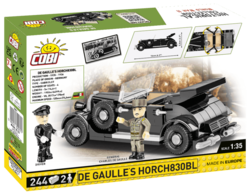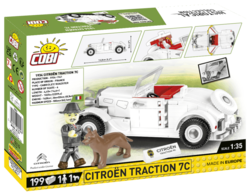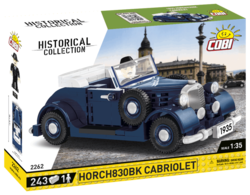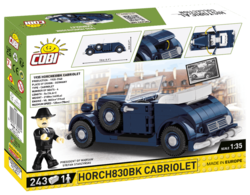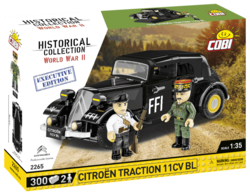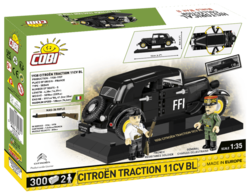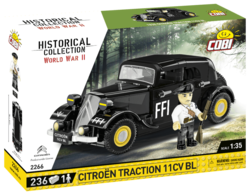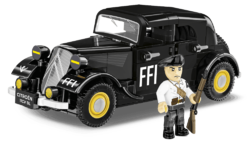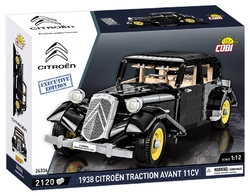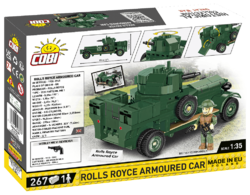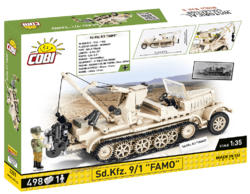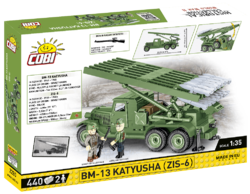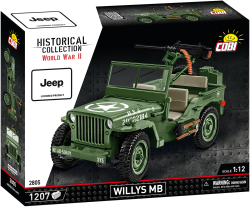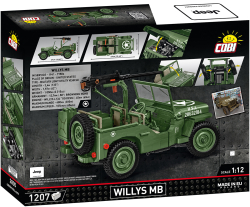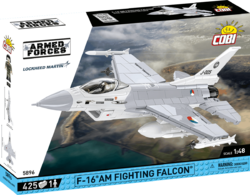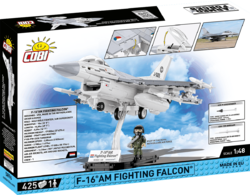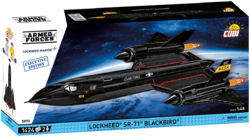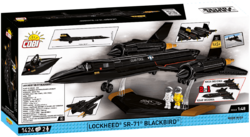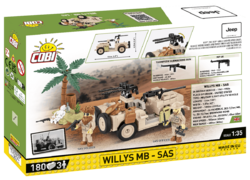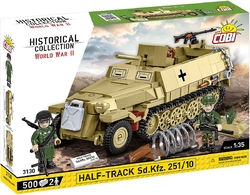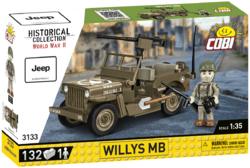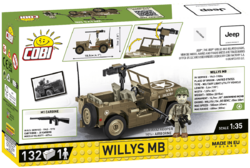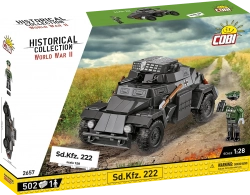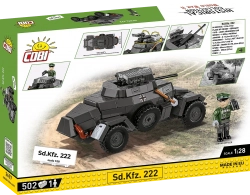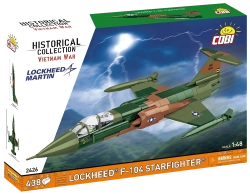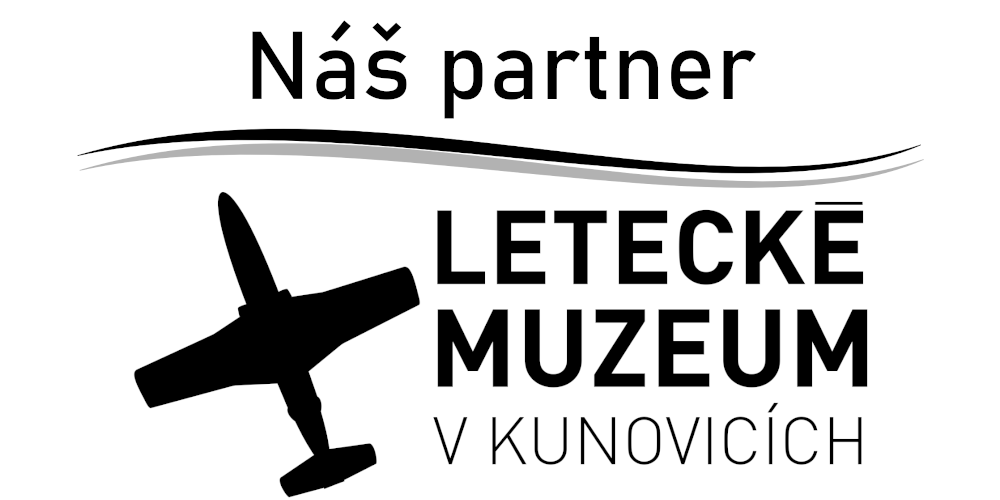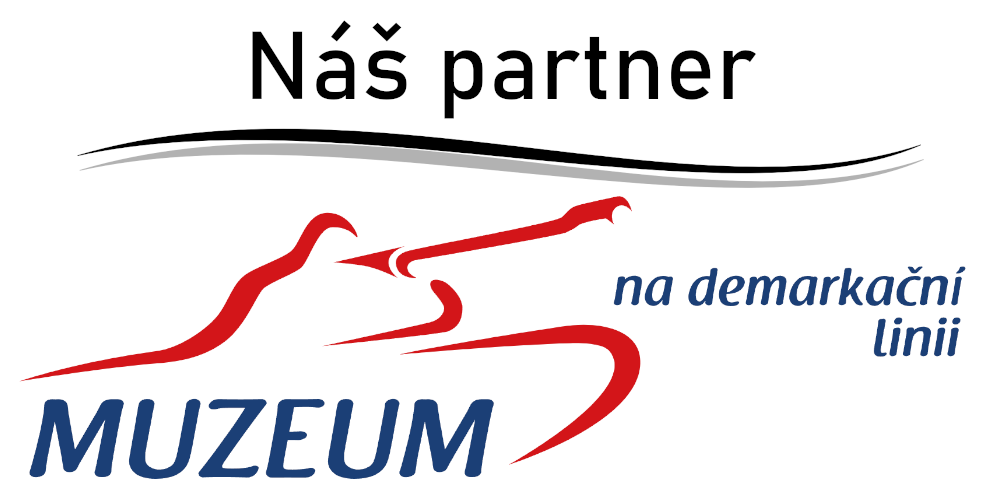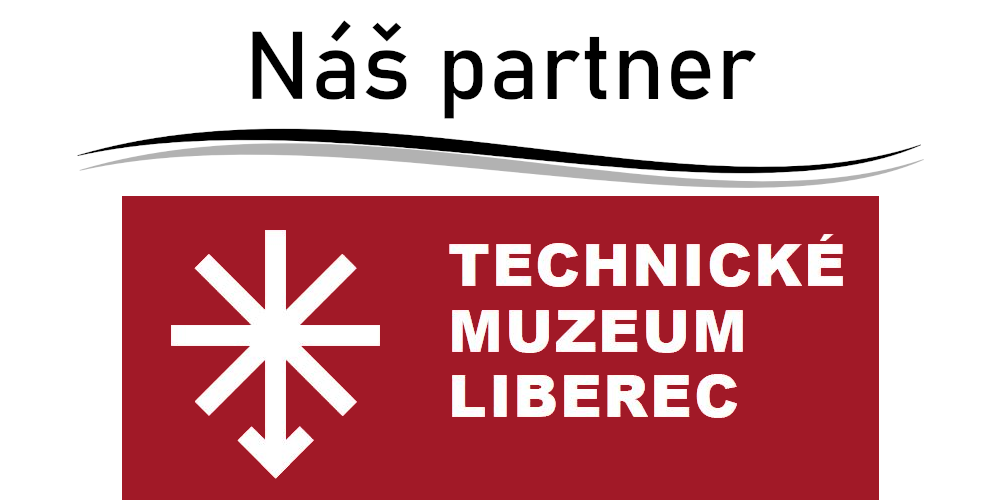Kit model of the German wheeled armored vehicle Sd.Kfz. 234/3 in field camouflage, nicknamed "Stummel" for its short barrel. The assembled model has a fixed turret with an adjustable gun sight and a rear-mounted canister and spare wheel. An MG 42 machine gun is installed in the suspension on the tower. The package also includes a figure of a German soldier, a vehicle commander and a cube with a description.
Show more
0 %
(0 Ranking)
914 Kč
pcs
Add to Cart
In stock - ready to ship (2 pcs)
| List Number: | COBI-2288 |
| EAN: | 5902251022884 |
| Warranty: | 24 months |
| Manufacturer: | COBI |
| Loyalty Points: | 6 |
| Price excluding VAT: | 755,17 Kč |
Description
Parametres
Files and Links
Discussion
Reviews

You know that: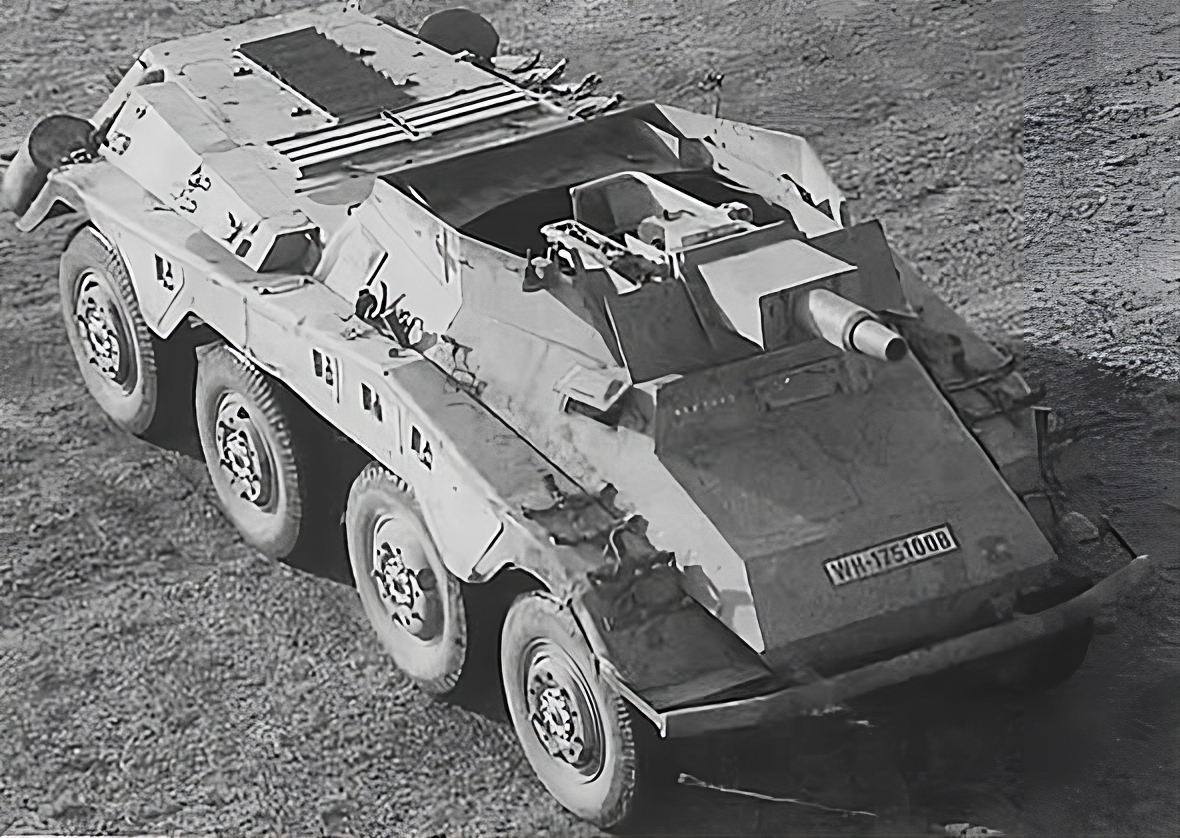
- In 1940, the German Ordnance Office issued a requirement for the development of an 8-wheeled vehicle suitable for desert and tropical conditions.
- Büssing undertook the task and designed an all-wheel drive vehicle, with all wheels steerable.
- A design feature of interest was the double steering position at the front and rear so that the vehicle would not have to be turned in difficult conditions.
- Part of the specification requirements included fitting the vehicle with an air-cooled engine, which was more suitable for desert conditions than a water-cooled engine. The best engines of this type were produced by Czechoslovak TATRA, which was under German occupation at the time.
- The armoured vehicle was intended to perform mainly reconnaissance missions and was therefore equipped with a large fuel tank that allowed a range of up to 1000 km.
- Military trials took place in June 1942. All the required characteristics were achieved. The only problem was the somewhat noisy air-cooled engine.
- The production itself was divided into several factories, with the chassis and the undercarriage provided by Büssing, the armour by Edelstahlwerke and the turret supplied by Daimle Benz.
- The vehicle was quite successful and approximately 478 units were built in four variants.
- The 234/3 version was fitted with a more powerful gun in a superstructure without a roof.
Technical parameters:
- dimensions: length 6.8 m, width 2.33 m, height 2.38 m
- weight 11 740 kg
- armour 5,5 - 30 mm
- power unit air-cooled diesel engine Tatra T103 with power of 157 kW
- number of gears 6 forward + 1 reverse
- maximum speed 90 km/h
- fuel tank capacity 420 l
- fuel consumption 40l / 100 km on roads and 60l /100km off-road
- main armament KwK 51 cannon 75 mm calibre with a range of 2200 m
- secondary armament MG 42 machine gun 7,92 mm calibre
- crew 4
German commander Hermann von Oppeln-Bronikowski about Sd.Kft 234:
"It was a good armoured car, but it had its shortcomings. Its howitzer was useful for infantry support, but it was not accurate and powerful enough to fight tanks. Its armor was sufficient to repel machine gun fire, but not for anti-tank weapons. The open roof was an advantage for better visibility but a disadvantage for crew protection. It was a compromise machine that had its strengths and weaknesses."
Assembly instructions
| Version (series) | 10/2023 |
|---|---|
| Dimensions after assembly | 18 x 7,5 x 9 cm |
| Scale | 1:35 |
| Number of figurines | 2 pcs |
| Box dimensions | 40 x 28 x 6 cm |
| Number of pieces | 438 pcs |
| Package weight | 550 g |
| Recommended age | 8+ |
| Contains luminous blocks | No |
| Material | Plastic |
| Collection | World War II |
| Compatible with other brand of kits | Yes |
Discussion is empty.
There is no review for product yet










